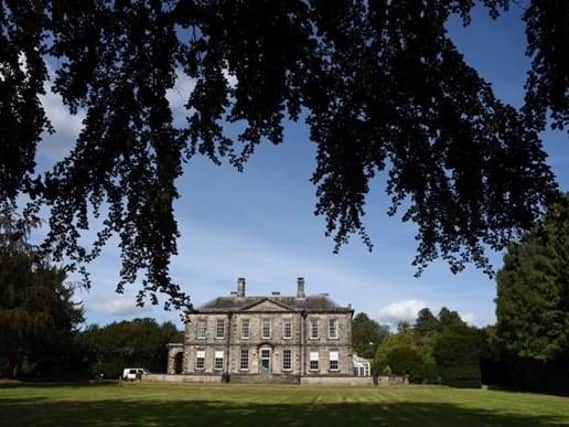Yorkshire Water to turn Esholt Hall - which was a battleground over Victorian sewage treatment - into a staff training academy


Esholt Hall will become a training academy for Yorkshire Water staff following a major renovation.
It is the latest chapter in the colourful history of the estate, which was at the centre of a row over sewage disposal in the 19th century. In 1904, the squire's daughters were controversially evicted from Esholt so that the house could be acquired by Bradford Corporation.
Advertisement
Hide AdAdvertisement
Hide AdEsholt Hall stands on the site of a former Cistercian monastery, Esholt Priory. The Queen Anne-style house was built in 1709, and in 1779 the estate passed to the Stansfield family.
In 1869, Major William Stansfield took legal action against Bradford Corporation to prevent them dumping sewage into the Bradford Beck, which fed the River Aire which flowed through his land. He secured an injunction and the council had to build a water treatment plant at Frizinghall, although this did not adequately solve the problem.
The city's aldermen even tried to enact a compulsory purchase order on Esholt, but it was rejected in the House of Lords. Villagers were delighted, and reportedly met Major William's daughters Mary, Elizabeth and Consuela at Apperley Bridge Station when they returned from the hearing in London to celebrate.
Major William died in 1880 at the age of 52, leaving no male heir. The sisters continued to live at the house, but perhaps they were in a more vulnerable position without a father or brother, as they agreed to sell the estate to Bradford Corporation for £239,000 in 1904 for reasons that are unknown.
Advertisement
Hide AdAdvertisement
Hide AdConsuela had married a vicar, although they did not have children before her death in 1932. Yet Mary and Elizabeth remained single and living at Esholt, and despite the sale, they did not leave quietly.
The Corporation was forced to evict them and sympathetic farm workers piled the unlikely refugees' belongings into carts and took them to stay with friends in Guiseley.
Elizabeth later moved into another family property, Buckden Hall near Skipton, and Mary settled in Hampshire.
The path was now clear for a a huge sewage works to be built on the estate. By the 1920s, the 300-acre facility had become operational, with part of it located on the site of a World War One aerodrome. There was a press house to extract grease from textile waste from Bradford's mills, though this later became obsolete.
Advertisement
Hide AdAdvertisement
Hide AdThe site later passed to Yorkshire Water, who also own Home Farm, the old estate farmhouse.
Yorkshire Water project lead Peter Coddington said: “We are committed to making our land deliver excellence for the people of Yorkshire and this is one of many projects delivering on our new Land Strategy. Esholt Hall is a magnificent building with a long history and we’re delighted to have agreed a plan to bring it back to its former glory, while ensuring it supports our colleagues and the local community.
“Our new Centre of Excellence, which is already operating in the renovated Courtyard buildings on the site, will be able to provide industry-leading training to our colleagues and the wider industry once the building is completed.”
Esholt is one of the locations that will form part of Yorkshire Water’s new academy. Alongside the redevelopment, plans have been submitted by Keyland, the property trading arm of Kelda Group and sister company to Yorkshire Water, to transform the redundant land around Esholt waste water treatment works into a sustainable development.